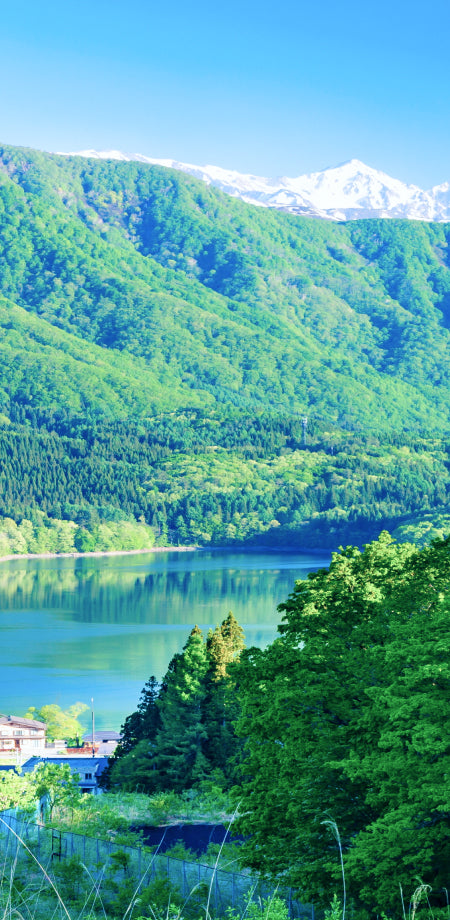投稿日:
更新日:
ShinshuWinter essentials: kotatsu, Japanese tea, and pickled Nozawana!
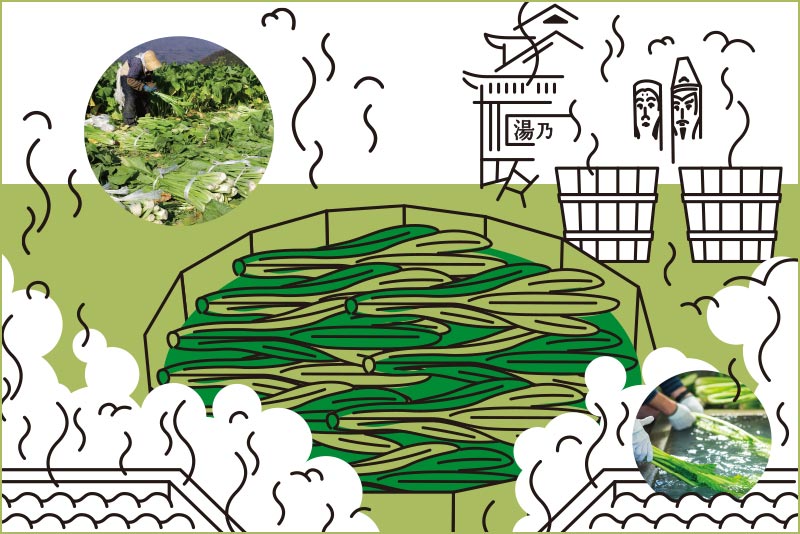
"Ogottsuo" in Nozawa Onsen, which is home to life
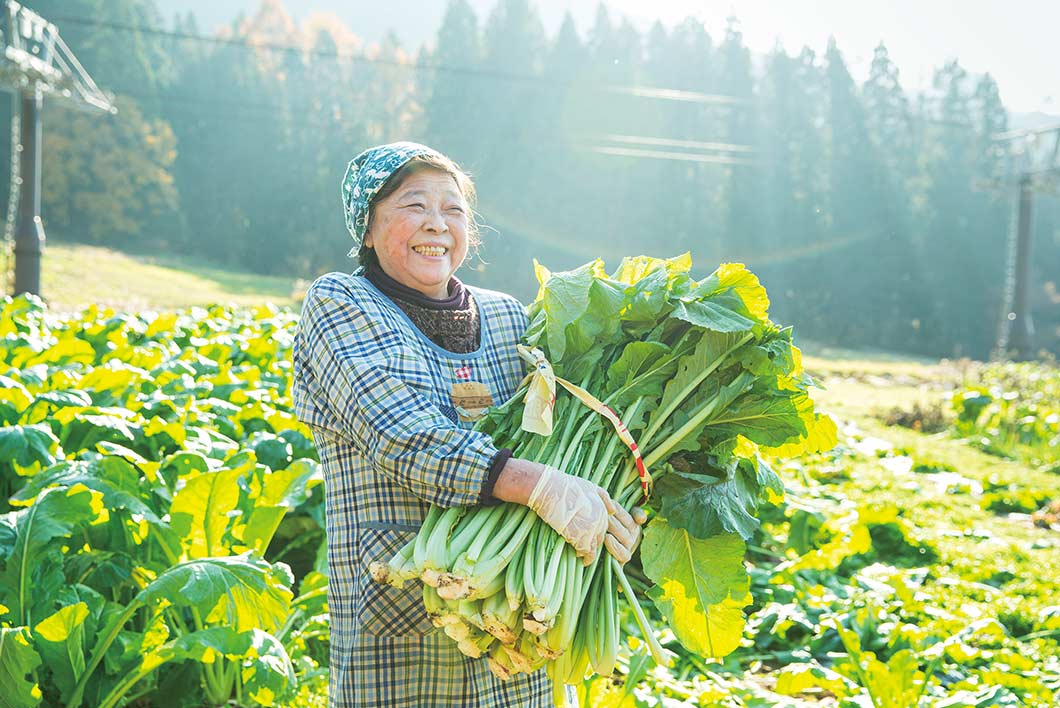
Takei harvests Nozawana cultivated in his own field. The seeds were sown this season in early September and harvested in about two months.
Nozawa Onsen Regional Cuisine Research Group
chairmanTakei Takako
Nagano Nozawa Onsen Village is one of the prefecture's most heavily snowy areas. In addition to skiers and snowboarders from both Japan and abroad, it has long been known as one of Japan's leading hot spring resorts, and has been visited by many tourists. Over 30 hot springs spill around the village, and Ogama, a spring source where hot water is nearly 90 degrees, is a village-designated natural monument. It is also popular as the "Nozawa Onsen kitchen" as it can be seen baking vegetables and eggs.
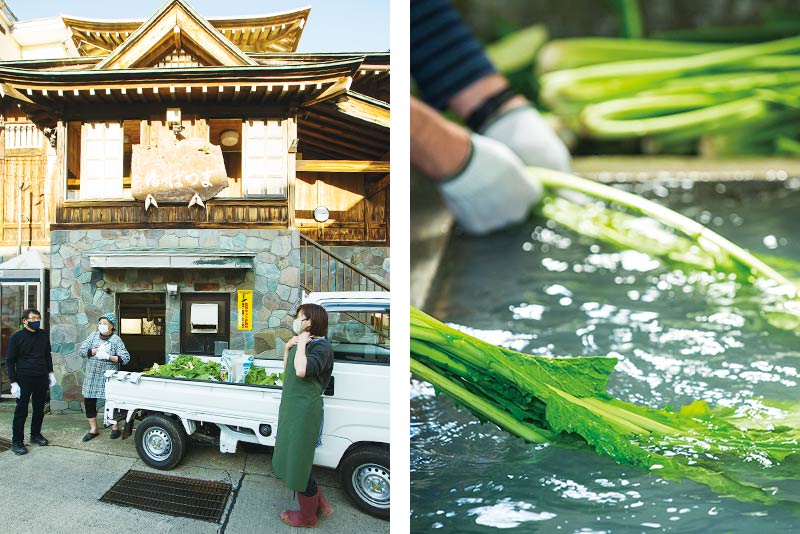
Matsuba no Yu, an outdoor bath near the guesthouse Yonetaro, has a two-story structure with a laundry area for hot spring water on the first floor (semi-based).
There are 13 outdoor baths (communal baths) in the village where the source is poured into the water, but in early November, when the Nozawana harvest season, about half of them are released for a limited time to wash the Nozawana, and villagers can be seen washing their own bathtubs or in the attached laundry area, regardless of age or gender.
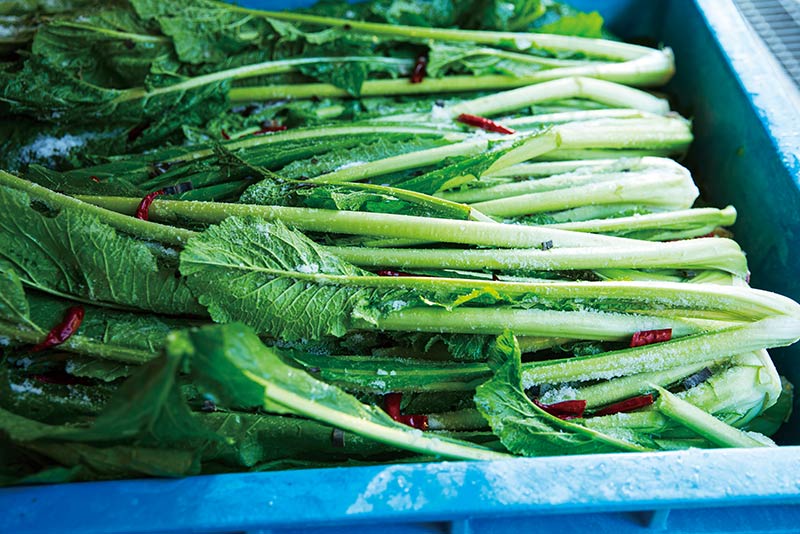
In order to bring out the flavor of the old miso barrels, Takei picks it in addition to salt and chili peppers, as well as a small amount of soy sauce.
"In the past, each household made miso, and when autumn came, the miso that was prepared in my family and the Takei family, which I married, would be taken out of the barrel, and then left the miso with the barrel, which was still with the miso, sprinkled salt on Nozawana that was washed in the hot springs after harvesting it. It's quite difficult to maintain the bucket, and recently, most homes pickle it in plastic buckets, but the miso left in the barrel gives off a 'sweet and sweet (※1)'" flavor.
The person who taught me this was Takei Takako, who runs the Yonetaro guesthouse in the village and is also the chairman of the Nozawa Onsen Local Cuisine Research Group.
The study group has gathered people who have the desire to "translate local cuisine that has been popular with villagers to future generations and brides from outside the village," and have begun their activities about 12 years ago. Currently, there are eight members, and they develop recipes that make use of local dishes, such as croquettes with Nozawana, and sell dishes at morning markets held in the village. Ginza NAGANO However, she is engaged in activities such as holding seminars for villagers, with the familiar local cuisine researcher Yokoyama Takako as the lecturer, and holding cooking classes at elementary schools, as well as creating a recipe book called "Nozawa no Ogottsuo (※2)." It features many local dishes that take root in Kita Shinano, including dishes made with Nozawana.
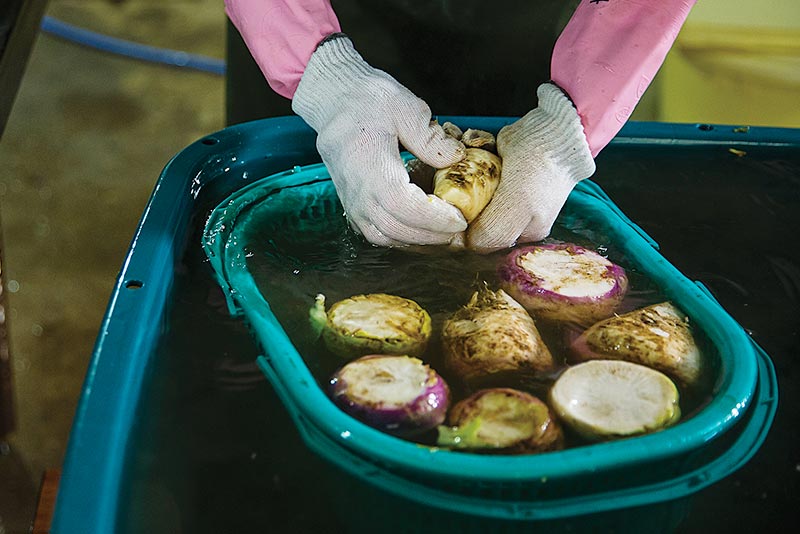
The cut-off Nozawana turnip part is also washed and cooked thoroughly.
"When pickled Nozawana, it's important to add Nozawana if it's salty, and add salt if you think it's not salty enough, so it's important to put your hands in with affection every day while you're pickling them. My mother-in-law also pickled them carefully, and I thought that Nozawana felt like a treasured treasure," says Takei. He picks about 800kg of Nozawana every year, serves it to guests at his guesthouse, and sends it to relatives and acquaintances. The restaurant attached to the guesthouse is open only during the winter. We offer dishes made with pickled Nozawana in oil, gyoza, fried rice, and more. These Nozawana dishes are said to be popular among foreign tourists who find themselves not good at pickles.
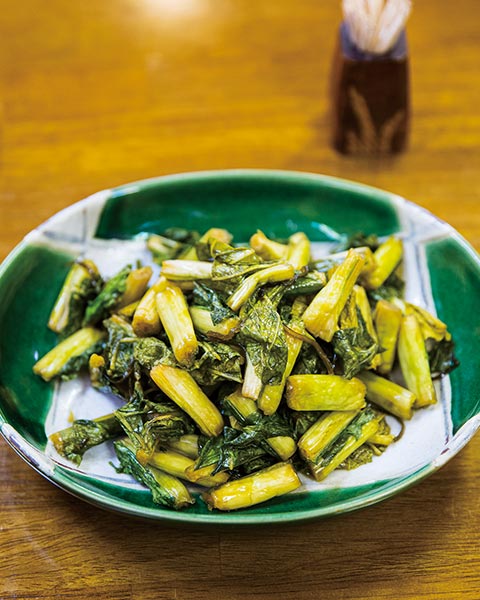
Tokizuke, a dish in small slices of Nozawana, seasoned with soy sauce, mirin, sugar, etc., and then pickled for a short period of time, is also well-received by customers.
By the time March has passed, when the number of skiers gradually decreases, the fermented pickled Nozawana was used in cooking. In the past, many households were boiled in sake lees and eaten, and the aroma was a spring tradition. Others from Nozawa Onsen Village have enjoyed the taste of Nozawana, which changes seasonal seasons, including the soft, bittersweet "towashi" that blooms in the spring and the stems begin to grow, the locals say that it is "more tastier than sea bream sashimi", and the autumn "thinned vegetables" that are eaten in a hemp kettle or as soaked in the seaweed, and the winter "nozawana Honzuke" that is thoroughly soaked for a month or two.
Due to changes in lifestyle, it seems that there are more and more guesthouses and families in the village where no Nozawana can be pickled. Still, Mr. Takei and others say, "I hope that one day we can open a cafeteria that serves local cuisine with members of the Local Culinary Research Group," and will continue to carry on the activities of passing on the local "gogotsuo" to the next generation.
*1 Sweet Mokkuri: Represents "melt flavor" Nagano A message from the northern part of the prefecture
*2 Ogotsu: Nagano The meaning of "feast" in the northern dialect of the prefecture
[Minshuku Yonetaro]
9459 Nozawa Onsen Village, Shimotakai District TEL 0269-85-2540
http://www14.plala.or.jp/yonetaro
Starting with seeds, we make pickled Nozawana with a special taste
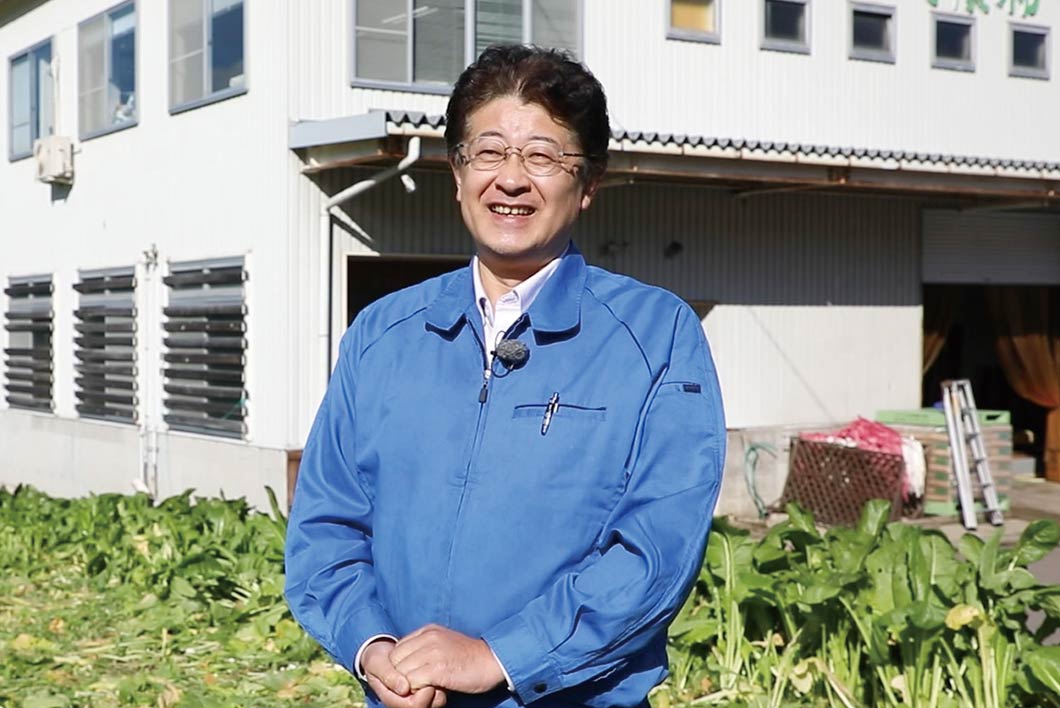
"They are actually more particular about pickling in the same way as in the village's household," says Tomii.
Limited Company and Miki Pickles
代表取締役Tomii Yoshihiro
Tomiki Pickles is a company that manufactures Nozawana pickles in-house, from seedlings to production.
"When it was founded in 1964, the only souvenir shop in the village was that only one souvenir shop sells hot spring buns. Many customers who stayed at the guesthouse wanted to take it home, saying, "The Nozawana pickles at the inn were delicious," so an acquaintance at the souvenir shop asked me if I could make some Nozawana pickles as souvenirs, which made me start manufacturing," says Tomii Yoshihiro, the second-generation president.
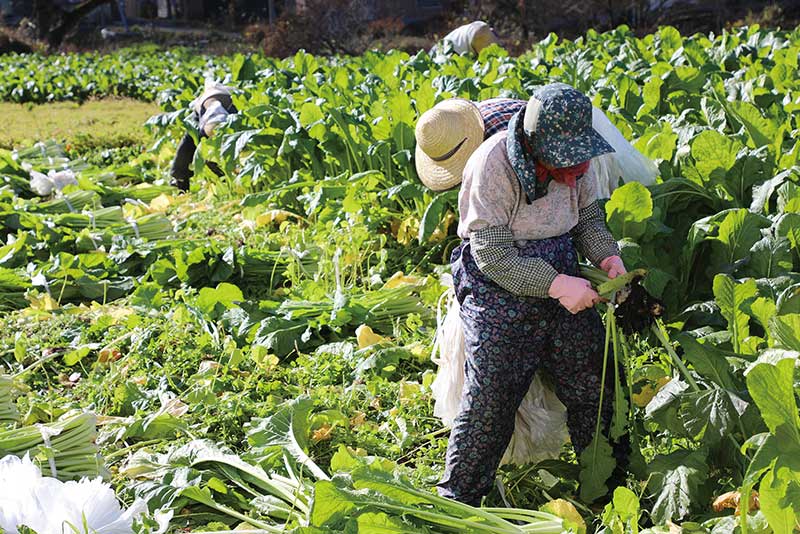
Harvest scene. Work was being carried out, such as cutting and putting together turnips.
The company, which is particular about its ingredients, receives seeds from Kenmeiji Temple, the birthplace of Nozawana, and uses Nozawana cultivated from native seeds grown in its own special fields.
"While native species have a flavour, they also have difficulty growing as they have a constant harvest due to continuous crops. Good soil is required to produce good Nozawana, so we also put effort into making soil," says Tomii.
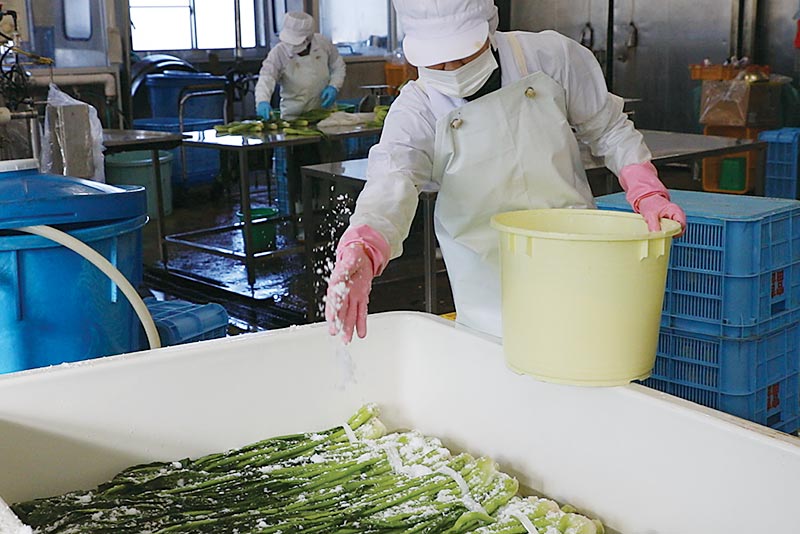
Preparation situation. Soak it in salt alone and allow it to mature for 1-2 months.
Another characteristic of the company is that the harvested Nozawana is prepared twice using hot spring water and salt alone, and the second time, the pickled dish is made from mineral-rich Hiragama Naruto. We also value seasonality and seasonal feel, and from March to October we sell "Sake-up" where you can soak spring vegetables for 2-3 weeks, from November to February we sell "Honzuke" where you can soak spring vegetables for 1-2 months using "Ice Refrigerated Sugi" (trademark registered) from November to February, and from December to May we sell "Bekkou Pickles" which are naturally aged and fermented in the winter climate of Nozawa Onsen Village. "Ice-refrigerated construction" is a method of aging the product in a state where it is slowly aged in an environment of -3 degrees, the same as the average temperature in February in Nozawa Onsen Village, and was born from the company's desire to "get as close to the taste of a home as possible."
The company's Nozawana pickles areShinshuThis is a processed product made from "traditional vegetables," and is even permitted to use a "traditional local cultivation certificate," which is proof that it is a product that respects traditional methods and the taste of traditional tradition.
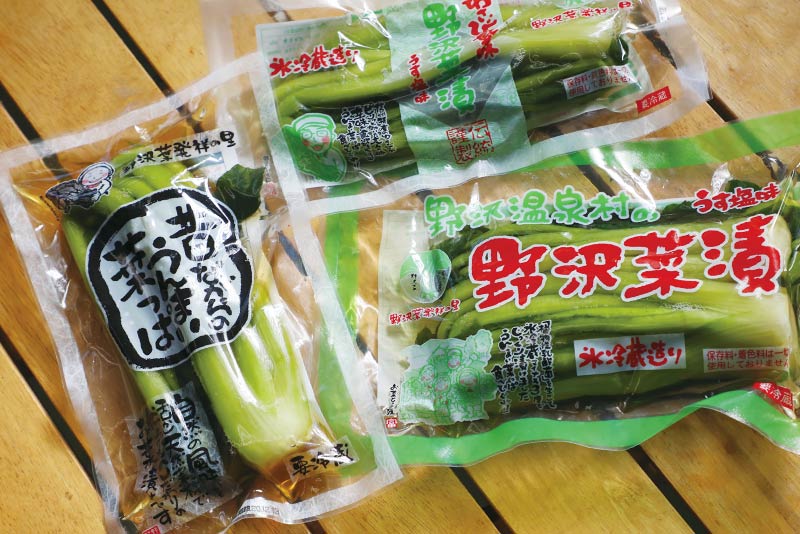
To enjoy the firm texture of Nozawana, we recommend cutting it into 3-4cm pieces.
Nozawana pickles are also a fermented food made from plant-based lactic acid bacteria, which has been gaining attention in recent years. The company's "Bekkou Pickledge" has a stronger sour taste than the average Nozawana pickled meat, and it has been criticized by customers who were surprised by it, but this acidity is proof that it is fermented by the progress of lactic acid fermentation, and it is said that it has a unique local flavor and has a strong fan base that praises it.
Due to the good weather this season, it is said that we have been able to harvest some of the most delicious Nozawana, which is rare in recent years, in a sweet state.ShinshuWhy not enjoy the Nozawana pickles, a representative taste of this dish?
[Tomiki Pickles Limited Company]
4608-1 Nozawa Onsen Village, Shimotakai District TEL 0269-85-3116
https://www.nozawana.co.jp/
INFORMATION"Old-fashioned sweet vegetable" Ginza NAGANO Now on sale!
Propose a new way to eat pickled Nozawana
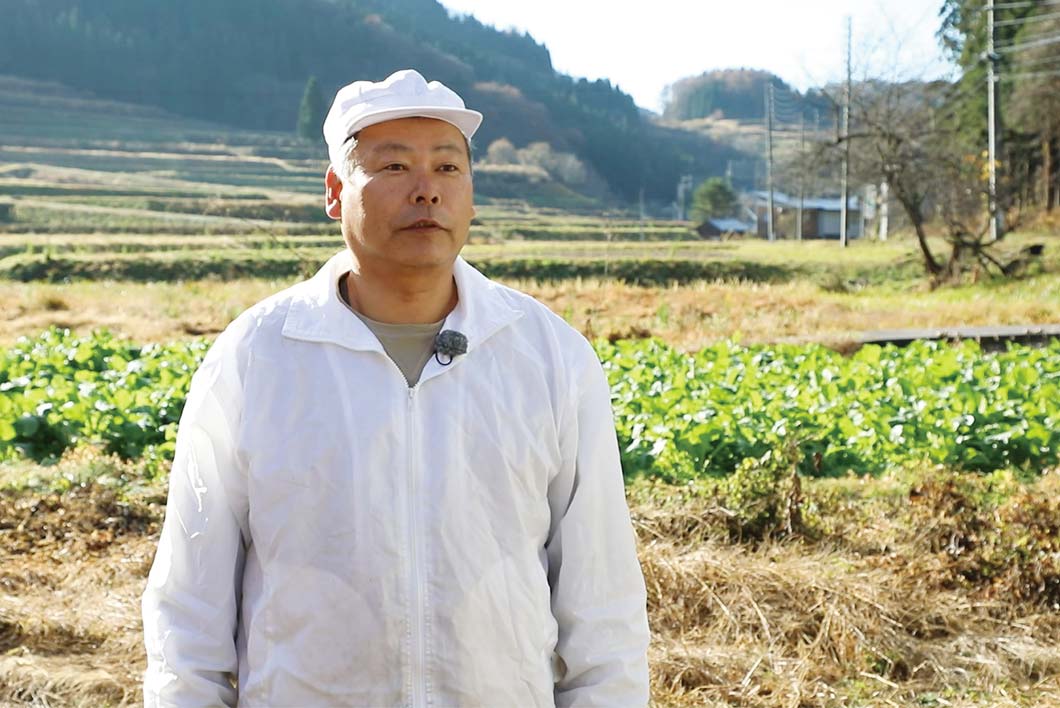
"I'm happy that my sense of flavoring is accepted, and Nozawana chili oil is not too spicy, so I hope your children can eat it," says Kishi.
Nozawa Onsen Nozawana Pickled Pickled Production Association
Union PresidentKishi Takashi
The Nozawa Onsen Nozawana Pickled Production Association was established in 1984 as part of the Yamamura Promotion Project and produces more than 10 types of processed products, mainly pickled Nozawana and Honzuke.
It is said that the amount of Nozawana pickled in the village is decreasing year by year, but the association's processed products are becoming more popular, with Nozawana chili oil and dry chili oil in particular being featured on a TV program about three years ago and becoming explosively popular.
"Nozawana used in "Nozawana Chili Oil" Nagano It is used from the northern part of the prefecture. I also want to make everything from Nozawa Onsen Village, but in order to ensure a certain amount, we have the farmers we trust in the village as well as the neighboring area produce it," says Kishi Takashi, president.
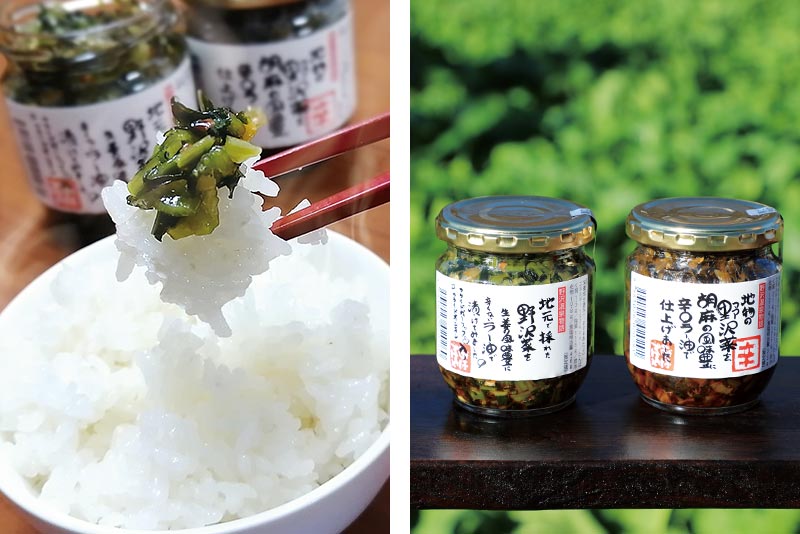
"Nozawana chili oil" and "dry chili oil." It was also featured on a TV program as a perfect dish to accompany your meal.
"Nozawana Chili Oil" was conceived by Kishi during the "eating chili oil boom" about 10 years ago. It also has seasoned it, and is a dish that stands out with a salty base, with fried garlic, onion and ginger. It can be enjoyed not only as accompaniment to rice, but also as adorable with freshly boiled pasta or mixed with Chinese noodles, and the flavor is easy to arrange, so it can be used in a variety of ways depending on your ingenuity. Dry chili oil is based on soy sauce and has a sweet and salty flavor and a strong spiciness, making it a different seasoning from Nozawana chili oil, and can be placed on chilled noodles and eaten like chilled dandan noodles, or it goes great with alcohol, making it a perfect snack. All of these products are popular products that have increased the number of repeat customers due to their deliciousness, and sometimes production can't keep up.
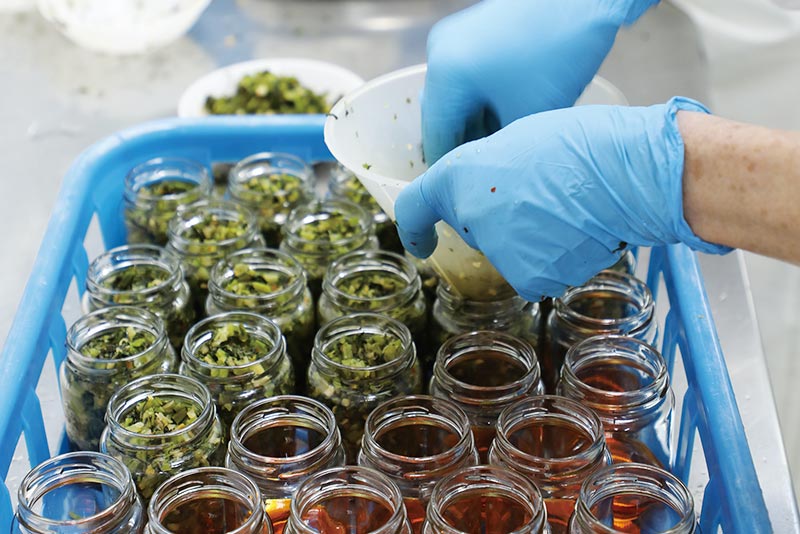
Bottle of "Nozawana Chili Oil". Various products are produced by hand.
The association has been manufacturing with a focus on hand since its founding. The reason why they maintain strong sales despite not having their own catalog and not advertising, may be because they are particular about the materials and carefully made.
"We sometimes hire part-time workers during the busy winter season, but we currently operate our staff of about six people. We would like to increase our manpower and increase our production volume and product lineup, so we would be happy if people of a wide range of generations could try out our association's products," says Kishi.
The Nozawa Onsen Nozawana Pickled Pickling Production Association continues its challenge to create new products that match the changing tastes of the times.
[Nozawa Onsen Nozawana Pickled Pickled Production Association]
1219 Hirabayashi, Nozawa Onsen Village, Shimotakai District TEL 0269-85-3771
http://www4.plala.or.jp/ohazukeya/
INFORMATION"Nozawana Chili Oil" and "Dry Chili Oil" Ginza NAGANO Now on sale!
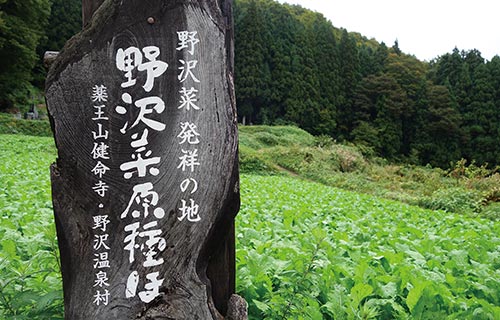
Nozawana Column
There are various theories, but when Kotenen Zui, the 8th head priest of Yakuozan Kenmeiji, a famous temple in Nozawa Onsen Village, went to Kyoto in 1756, he brought back the seeds of Tennoji turnip and sowed them in the fields. It is said that Nozawana was the one that mutated depending on the climate and climate of Nozawa Onsen Village, and the leaves, stems, and turnips became larger. The village of Nozawa Onsen and the neighboring venue where the "Iiyama Rape Flower Festival" is heldIiyama CityIn surrounding areas such as this, the yellow "rape blossoms" that mark the arrival of spring is said to refer to Nozawana's "rape blossoms."
This article is information as of January 2021.
Please note that the products we carry may have changed.















